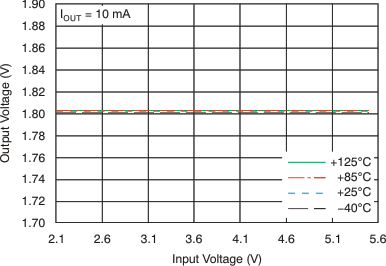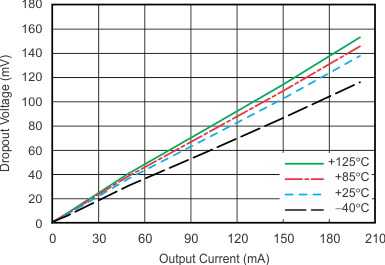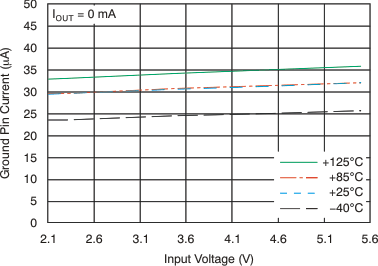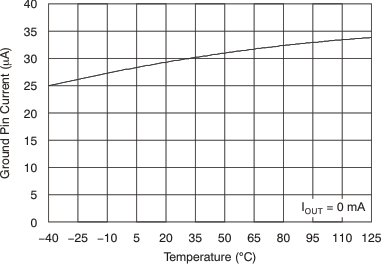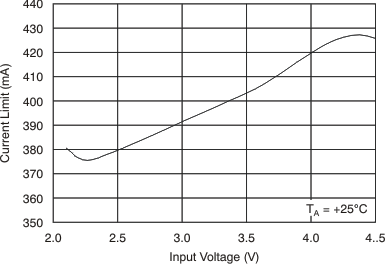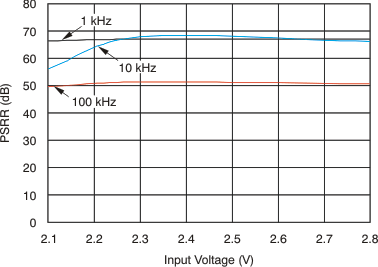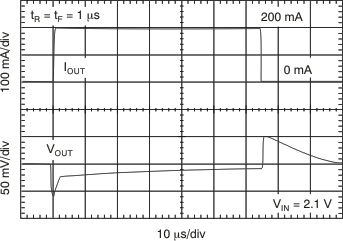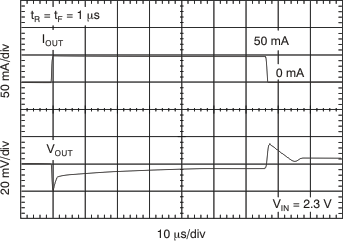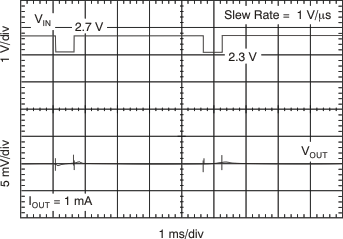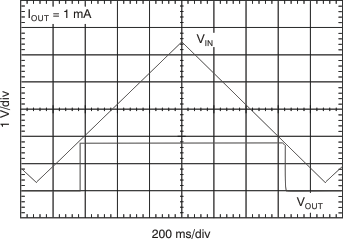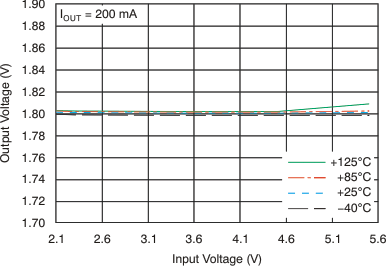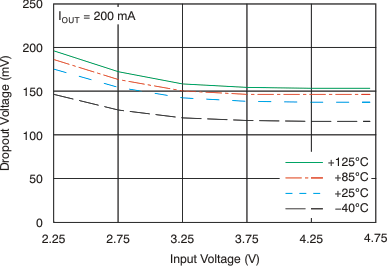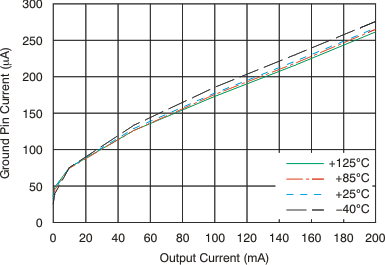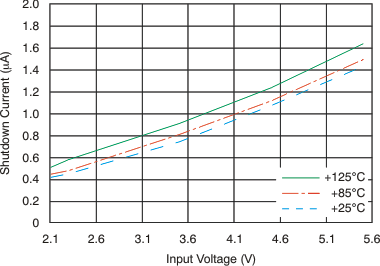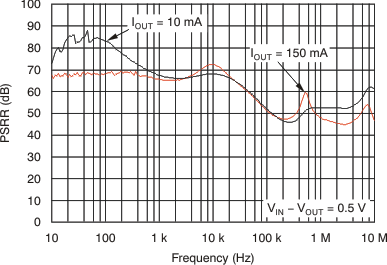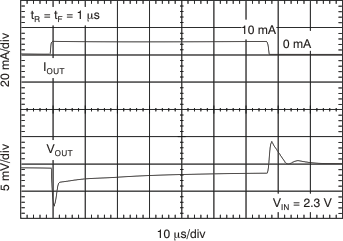SLVSA61H February 2010 – August 2016
PRODUCTION DATA.
- 1 Features
- 2 Applications
- 3 Description
- 4 Revision History
- 5 Pin Configuration and Functions
- 6 Specifications
- 7 Detailed Description
- 8 Application and Implementation
- 9 Power Supply Recommendations
- 10Layout
- 11Device and Documentation Support
- 12Mechanical, Packaging, and Orderable Information
6 Specifications
6.1 Absolute Maximum Ratings
At TA = –40°C to 125°C (unless otherwise noted). All voltages are with respect to GND.(1)(1) Stresses beyond those listed under Absolute Maximum Ratings may cause permanent damage to the device. These are stress ratings only, which do not imply functional operation of the device at these or any other conditions beyond those indicated under Recommended Operating Conditions. Exposure to absolute-maximum-rated conditions for extended periods may affect device reliability.
6.2 ESD Ratings
| VALUE | UNIT | |||
|---|---|---|---|---|
| V(ESD) | Electrostatic discharge | Human-body model (HBM), per AEC Q100-002(1) | ±2000 | V |
| Charged-device model (CDM), per AEC Q100-011 | ±750 | |||
6.3 Recommended Operating Conditions
over operating free-air temperature range (unless otherwise noted)| MIN | NOM | MAX | UNIT | ||
|---|---|---|---|---|---|
| VIN | Input supply-voltage range | 2 | 5.5 | V | |
| VOUT | Output voltage | 1.2 | 4.8 | V | |
| IOUT | Oytput current | 0 | 200 | mA | |
| VEN | Voltage on EN pin | 0 | VIN | V | |
| TA | Operating ambient temperature | –40 | 125 | °C | |
6.4 Thermal Information
| THERMAL METRIC(1) | TLV700xx-Q1 | UNIT | ||
|---|---|---|---|---|
| DCK (SOT) | DDC (SOT) | |||
| 5 Pins | 5 PINS | |||
| RθJA | Junction-to-ambient thermal resistance | 307.6 | 262.8 | °C/W |
| RθJC(top) | Junction-to-case (top) thermal resistance | 79.1 | 68.2 | °C/W |
| RθJB | Junction-to-board thermal resistance | 93.7 | 81.6 | °C/W |
| ψJT | Junction-to-top characterization parameter | 1.3 | 1.1 | °C/W |
| ψJB | Junction-to-board characterization parameter | 92.8 | 80.9 | °C/W |
| RθJC(bot) | Junction-to-case (bottom) thermal resistance | n/a | n/a | °C/W |
(1) For more information about traditional and new thermal metrics, see the Semiconductor and IC Package Thermal Metrics application report, SPRA953.
6.5 Electrical Characteristics
VIN = VOUT(TYP) + 0.3 V or 2 V (whichever is greater); IOUT = 10 mA, VEN = VIN, COUT = 1 μF, and TA = –40°C to 125°C (unless otherwise noted). Typical values are at TA = 25°C.space
| PARAMETER | TEST CONDITIONS | MIN | TYP | MAX | UNIT | |||
|---|---|---|---|---|---|---|---|---|
| VOUT | DC output accuracy | –40°C ≤ TA ≤ 125°C | VOUT ≥ 1 V | –2% | 2% | |||
| VOUT < 1 V | –20 | 20 | mV | |||||
| ΔVO / ΔVIN | Line regulation | VOUT(NOM) + 0.5 V ≤ VIN ≤ 5.5 V IOUT = 10 mA |
1 | 5 | mV | |||
| ΔVO / ΔIOUT | Load regulation | 0 mA ≤ IOUT ≤ 200 mA, TLV70025-Q1 TLV70030-Q1, TLV70033-Q1 |
15 | mV | ||||
| 0 mA ≤ IOUT ≤ 200 mA, TLV70012A-Q1 | 20 | |||||||
| VDO | Dropout voltage(1) | VIN = 0.98 × VOUT(NOM), IOUT = 200 mA | 175 | 250 | mV | |||
| ICL | Output current limit | VOUT = 0.9 × VOUT(NOM) | 220 | 350 | 550 | mA | ||
| IGND | Ground pin current | IOUT = 0 mA | 31 | 55 | μA | |||
| IOUT = 200 mA, VIN = VOUT + 0.5 V | 270 | μA | ||||||
| ISHDN | Ground pin current (shutdown) | VEN ≤ 0.4 V, 2 V ≤ VIN ≤ 4.5 V | 1 | 2.5 | μA | |||
| PSRR | Power-supply rejection ratio | VIN = 2.3 V, VOUT = 1.8 V IOUT = 10 mA, f = 1 kHz |
68 | dB | ||||
| VN | Output noise voltage | BW = 100 Hz to 100 kHz VIN = 2.3 V, VOUT = 1.8 V, IOUT = 10 mA |
48 | μVRMS | ||||
| tSTR | Startup time(2) | COUT = 1 μF, IOUT = 200 mA | 100 | μs | ||||
| VEN(HI) | Enable pin high (enabled) | 0.9 | VIN | V | ||||
| VEN(LO) | Enable pin low (disabled) | 0 | 0.4 | V | ||||
| IEN | Enable pin current | VEN = 5.5 V , IOUT = 10 μA | 0.04 | 0.5 | μA | |||
| UVLO | Undervoltage lockout | VIN rising | 1.9 | V | ||||
| TSD | Thermal shutdown temperature | Shutdown, temperature increasing | 160 | °C | ||||
| Reset, temperature decreasing | 140 | °C | ||||||
| TA | Operating ambient temperature | –40 | 125 | °C | ||||
(1) VDO is measured for devices with VOUT(NOM) ≥ 2.35 V.
(2) Startup time = time from EN assertion to 0.98 × VOUT(NOM).
6.6 Typical Characteristics
TJ = –40°C to 125°C, VIN = VOUT(TYP) + 0.5 V or 2 V (whichever is greater); IOUT = 10 mA, VEN = VIN, COUT = 1 μF (unless otherwise noted). Typical values are at TJ = 25°C.